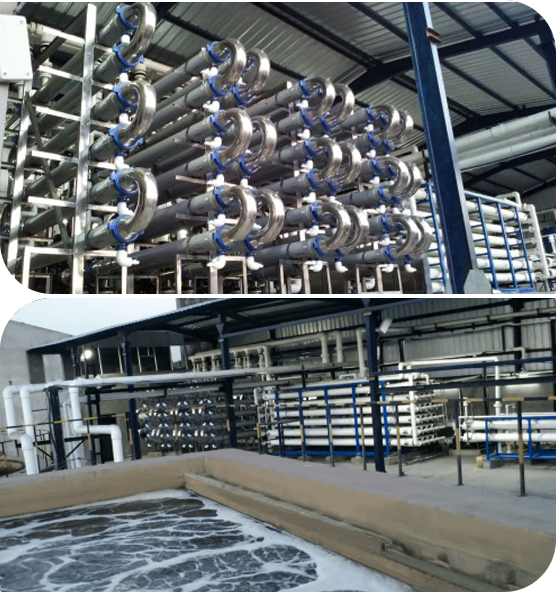
Waterman Engineers Australia is probably the leading producers of Zero Liquid Discharge program. A ZLD technique is often a procedure system which is used to eliminate all the liquid squander from a program. The aim of ZLD water treatment is to lower wastewater economically and develop potable drinking water which is match for normal use. Zero discharge procedure is a sophisticated remedy technique that comprises ultrafiltration, reverse osmosis, evaporation and fractional electro deionization. And we've been a properly-identified provider of ZLD programs.
In many Industries, which include electricity, oil & gas, chemical compounds, mining and Other individuals, a great deal of wastewater is generated that should be managed. Conventionally, this discharge of wastewater is done by means of a plant outfall to some floor water overall body like an evaporation pond, or in some cases deep very well injected. These practices bring on lots of environmental problems by the general public in lots of locations of the entire world, as h2o is actually a scarce resource and its management ought to be monitored. These fears have resulted during the institution of ZLD procedures by several industries to lessen their environmental footprint and boost sustainability. And, Waterman Engineers Australia are most effective ZLD suppliers you'll find for This method.
Attributes OF ZERO LIQUID DISCHARGE SYSTEM
The properties of a Zero Liquid Discharge program could vary based on the unique style and technological innovation applied. Having said that, some common Homes of ZLD programs include things like:
Drinking water Conservation: Considered one of the key aims of ZLD methods is to conserve water by minimizing the discharge of liquid waste into the surroundings.
Large Water Purity: ZLD methods are intended to create large-high quality water which is free of charge from impurities and contaminants, which makes them suitable for use in many industrial processes.
Flexibility: ZLD techniques are often developed to support a wide array of enter liquid streams, that makes them functional and well suited for use in various industries.
Highly developed Wastewater Treatment method: Zero liquid discharge techniques use Sophisticated wastewater remedy methods to take out impurities and contaminants through the effluent, generating substantial-good quality drinking water.
Waste Reduction: ZLD devices assistance reduce waste by lowering the quantity of liquid waste that should be disposed of and by manufacturing a concentrated, good waste materials that could be properly disposed of.
Electrical power Performance: ZLD programs may be Strength-intense because of the substantial Electrical power prerequisites of evaporation as well as other wastewater cure procedures. Nonetheless, advancements in engineering are building Zero liquid discharge devices a lot more Strength-economical and price-productive.
Waterman Engineers Australia manufactures Zero Liquid Discharge (ZLD) devices made to eliminate all liquid waste, aiming to produce potable h2o and limit environmental impression. Their ZLD devices generally incorporate ultrafiltration, reverse osmosis, evaporation, and fractional electro deionization. Essential technologies utilised are Falling Movie Brine Concentrators, Pressured Circulation Crystallizer, and Some others, with a two-move strategy of pre-concentration and evaporation/crystallization to Get better and reuse water. These programs are adaptable to distinct industries, emphasizing drinking water conservation, superior drinking water purity, waste reduction, and Vitality efficiency. Complex requirements are different and customizable, looking at components like water supply, flow amount, and feed water excellent.
The need for Zero Liquid Discharge (ZLD) programs occurs through the requirement to address environmental problems associated with drinking water scarcity and air pollution. In industries like electrical power, oil & fuel, and mining, huge amounts of wastewater are created. Traditionally, this wastewater is discharged into bodies of drinking water, resulting in air pollution and depleting thoroughly clean drinking water means. ZLD methods goal to attenuate these impacts by managing and recycling wastewater inside the commercial course of action, thus conserving h2o, reducing waste, and marketing sustainability.
When it comes to the technological technical specs of the Zero Liquid Discharge (ZLD) system, crucial factors to center on involve the h2o source it can address, the system's flow price, the quality of feed h2o, the levels of procedure associated, the Restoration fee of drinking water, strategies for concentrate disposal, materials of design, functioning ailments, and process automation and Management. These variables ensure the system's success, toughness, and efficiency in managing and recycling industrial wastewater.
Zero Liquid Discharge (ZLD) vegetation supply Advantages such as h2o conservation, waste reduction, and Zld System Manufacturer Zero Liquid Discharge System air pollution prevention, contributing to environmental sustainability. They are applicable in industries like power technology, oil and gasoline, chemicals, and mining, wherever they help in running industrial wastewater properly, decreasing the ecological footprint, and complying with demanding environmental rules. These systems are important in locations struggling with water scarcity and for industries aiming to further improve their sustainability and operational efficiency.
FAQs for your Zero Liquid Discharge (ZLD) method generally address its operational ideas, Price tag-efficiency, routine maintenance specifications, environmental impression, applicability throughout different industries, and regulatory compliance. These issues help end users have an understanding of the method's Added benefits, technological demands, and suitability for their certain wastewater administration desires.
one. Zero Liquid Discharge (ZLD) is a wastewater remedy course of action meant to eliminate all liquid waste.
2. The method's elements are influenced by the specific industrial method, wastewater composition, and regulatory demands.
three. Effluent treatment method vegetation clear away pollutants from textile effluents to avoid environmental contamination.
four. Pros contain h2o conservation, pollution reduction, and regulatory compliance.
five. The goal is to minimize environmental impact by recycling h2o and lessening squander.
6-9. Effluent treatment crops are phases in wastewater remedy: Major (physical separation), secondary (Organic cure), and tertiary (State-of-the-art treatment method).
10. Device operations consist of filtration, sedimentation, Organic cure, and disinfection.
11. Restricting parameters are components that influence the remedy's efficiency, like pH and contaminant focus.
12. Style and design issues contain flow amount, effluent composition, and wanted high quality of addressed water.